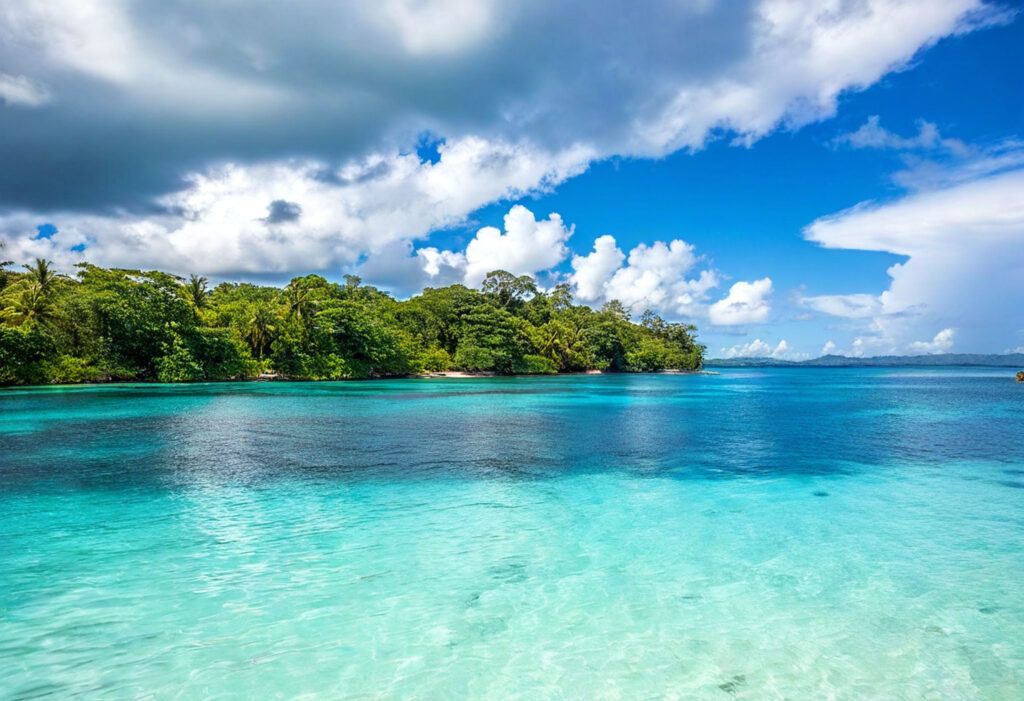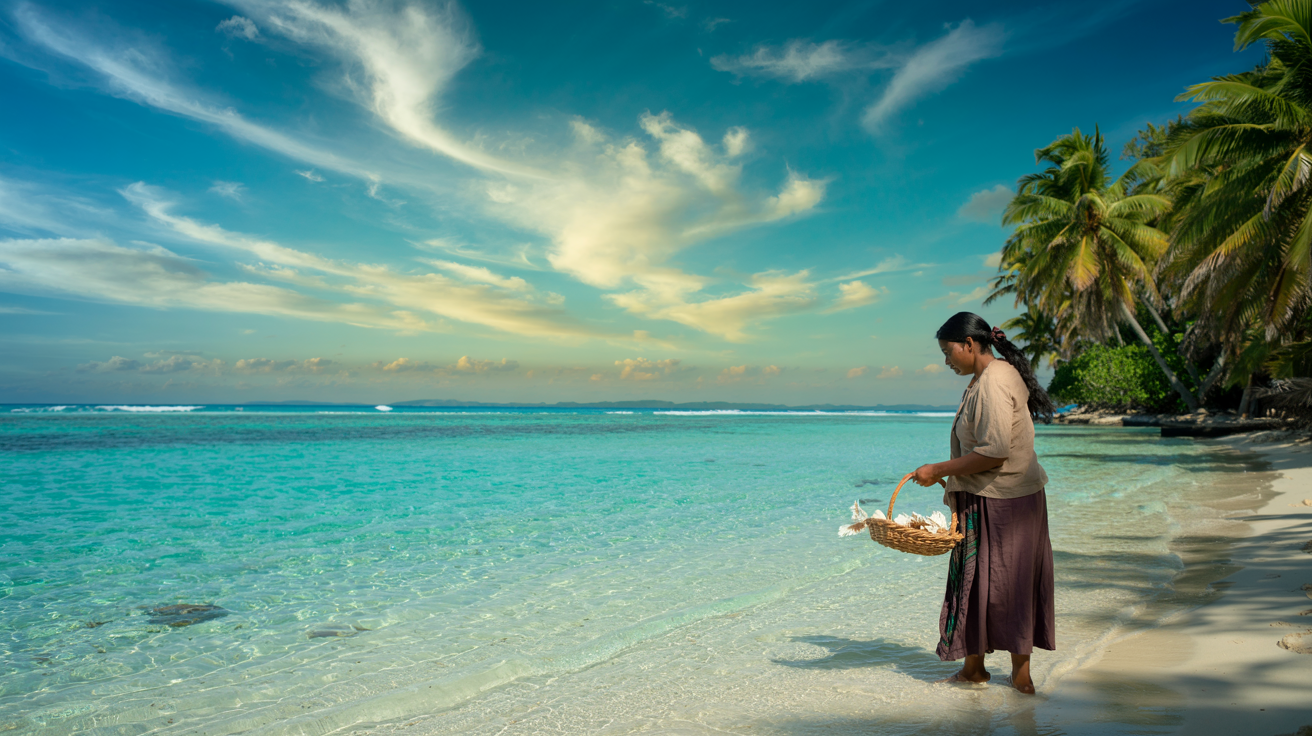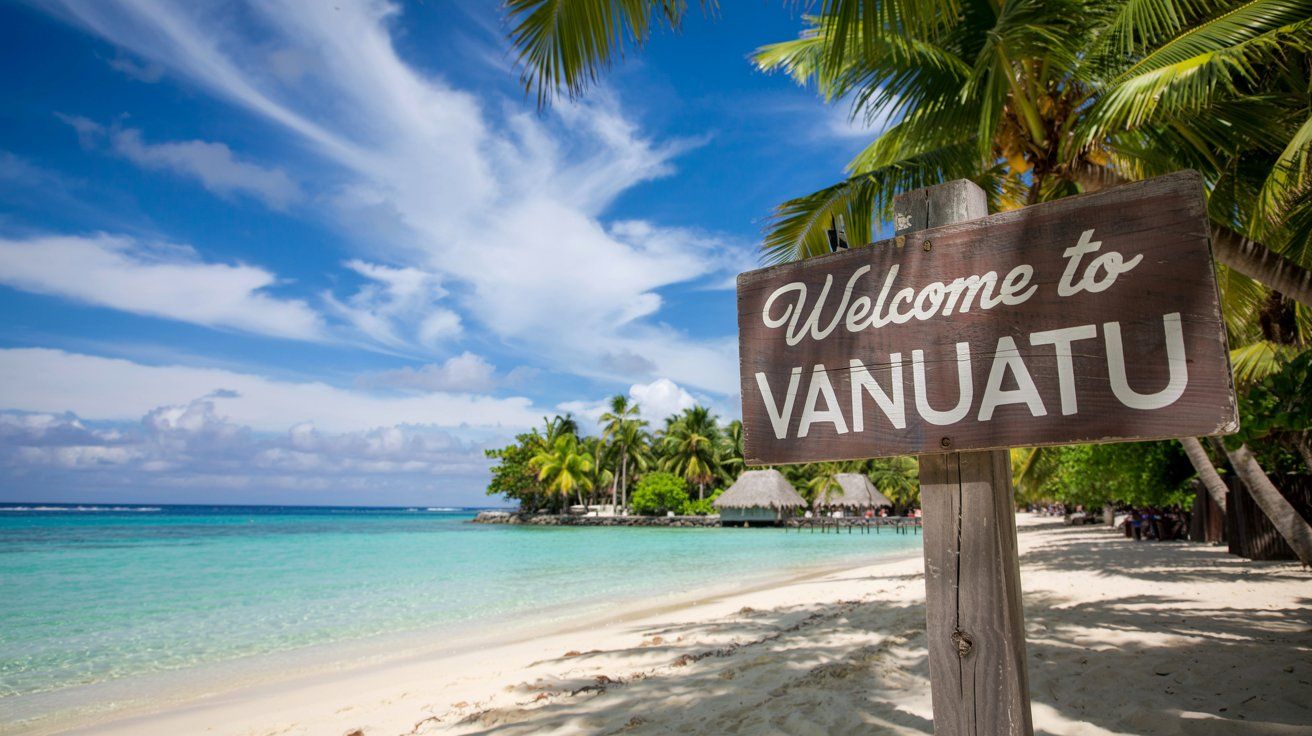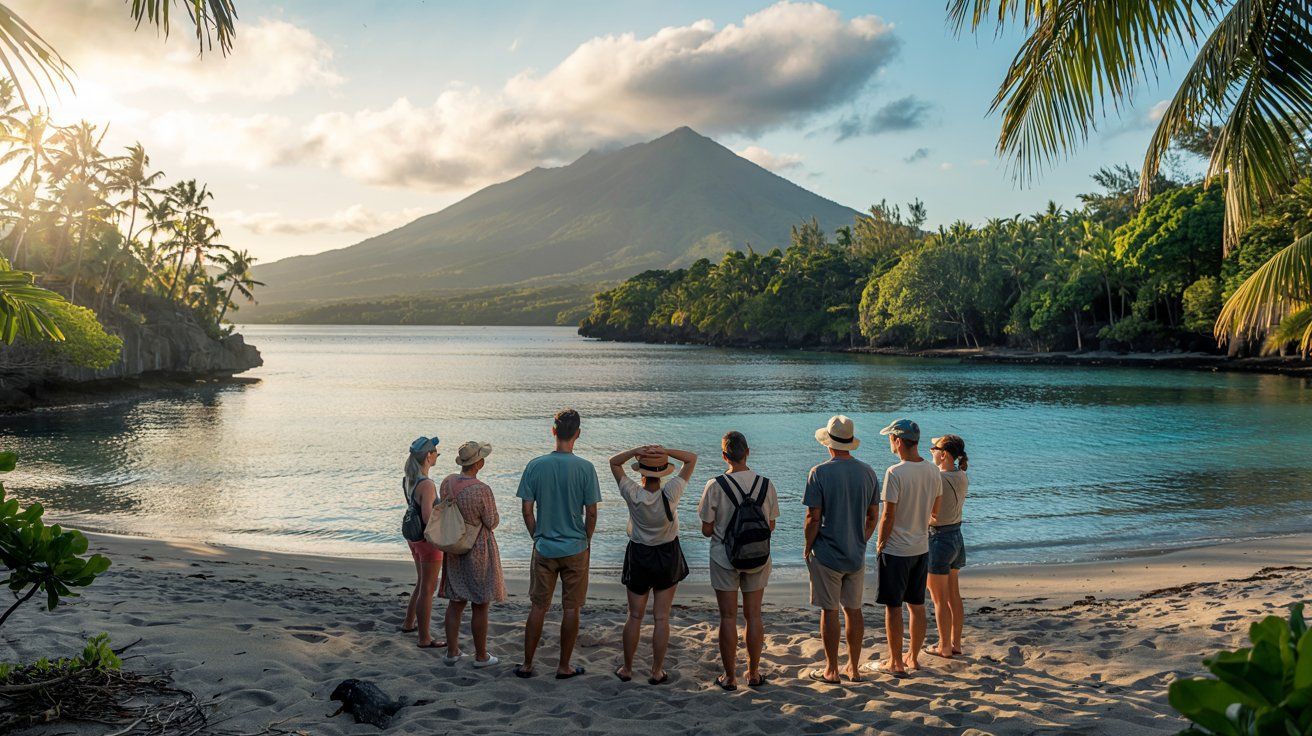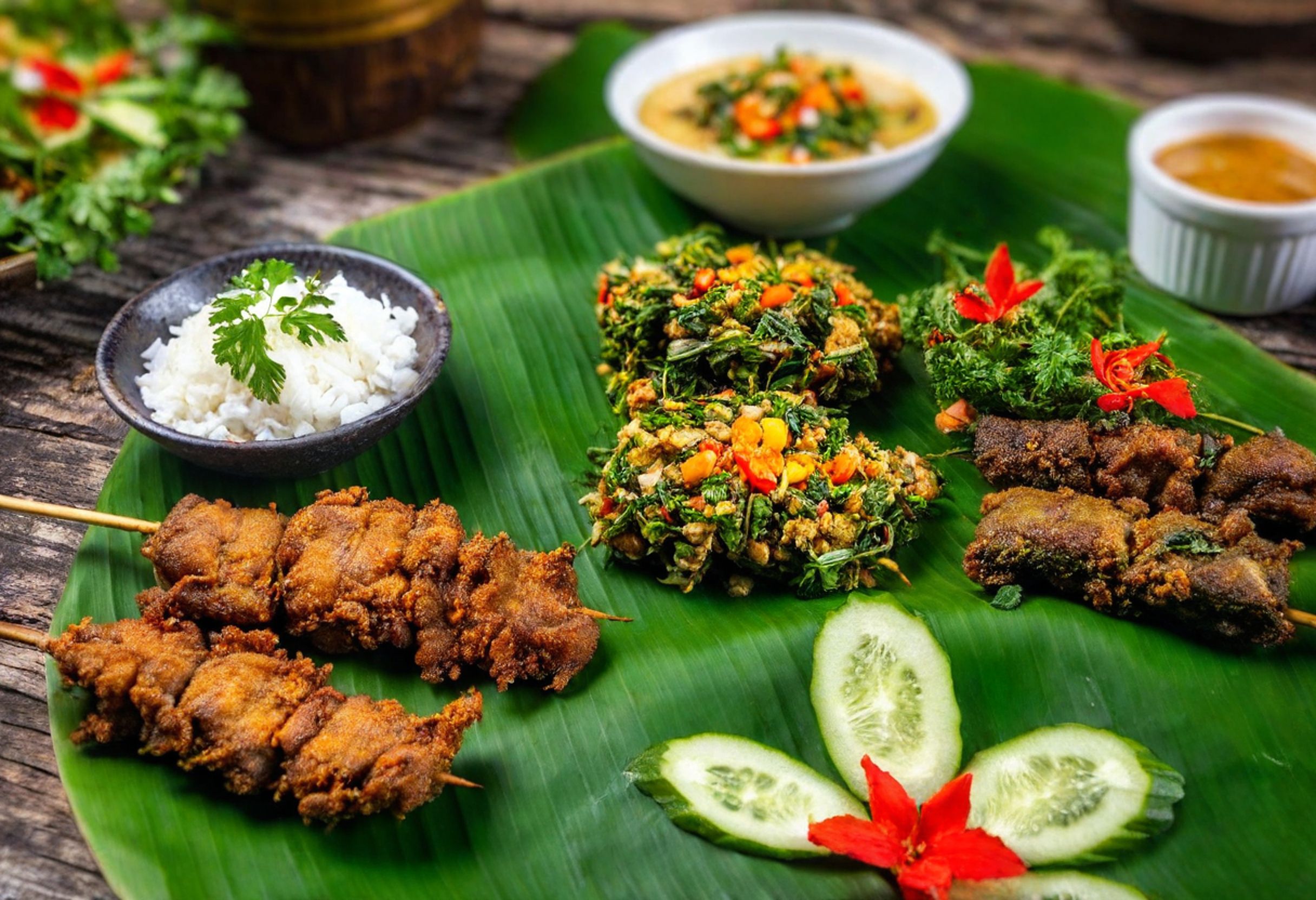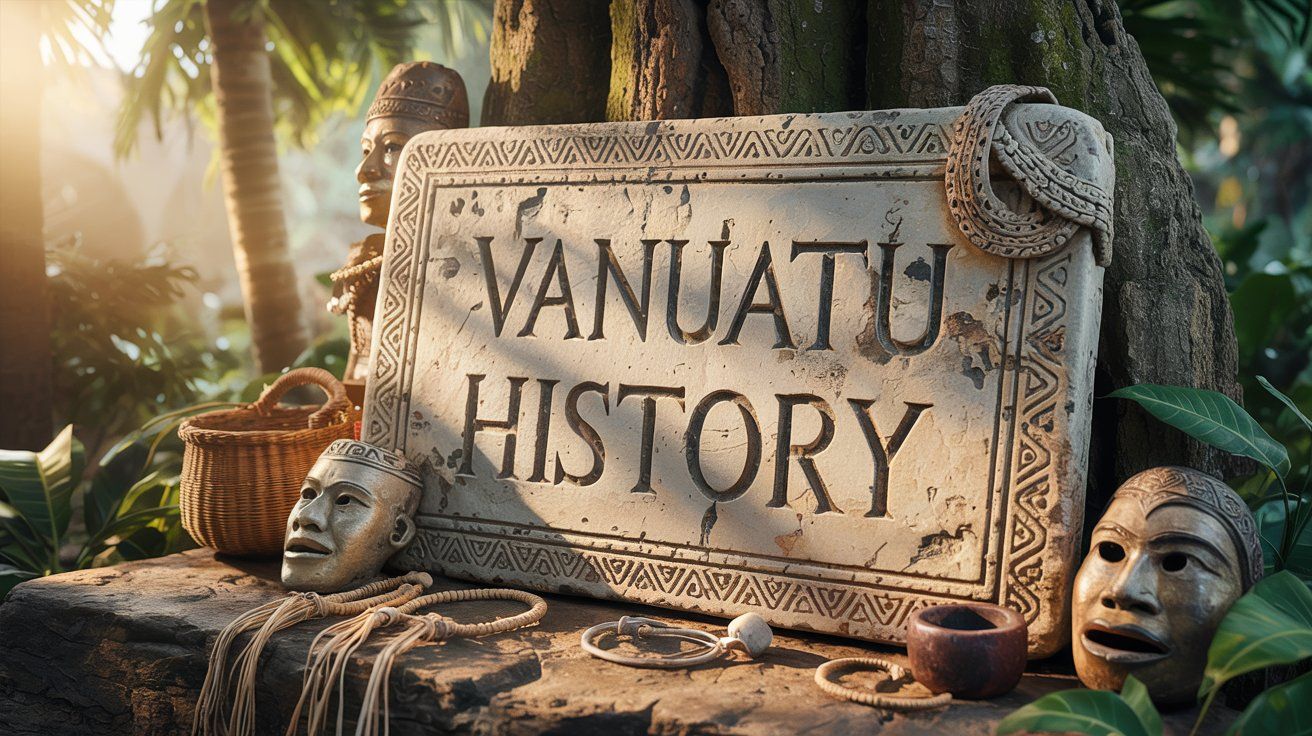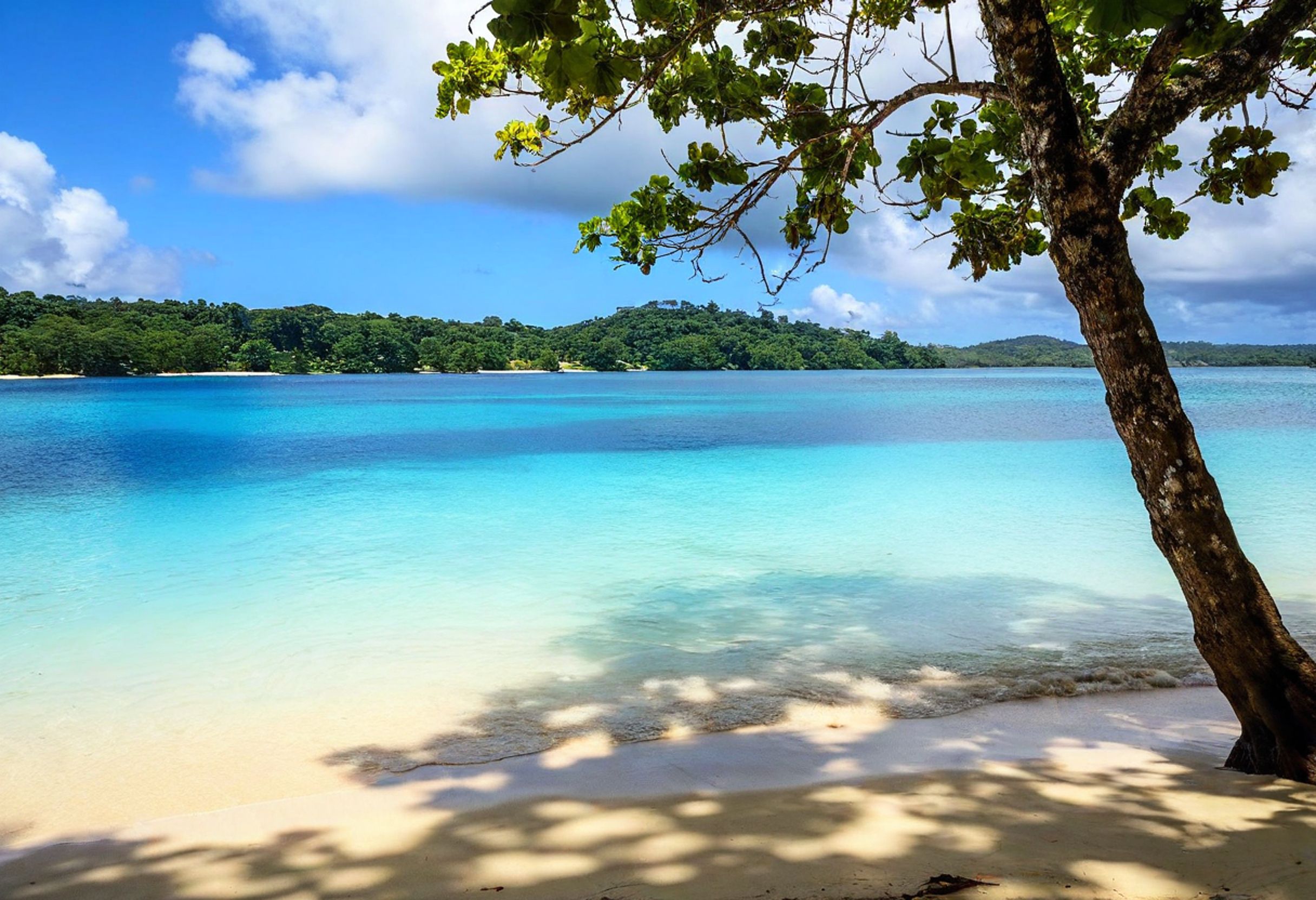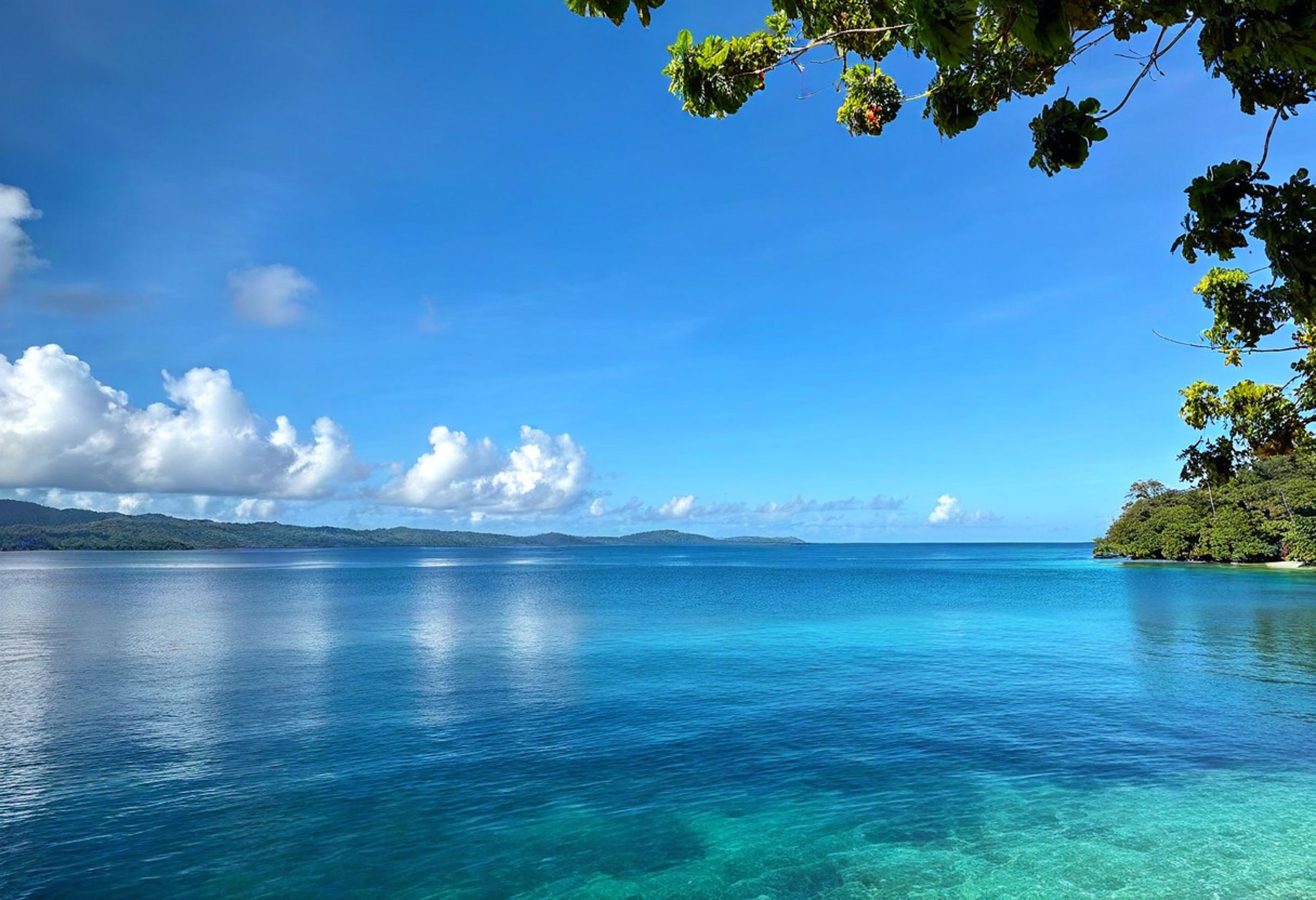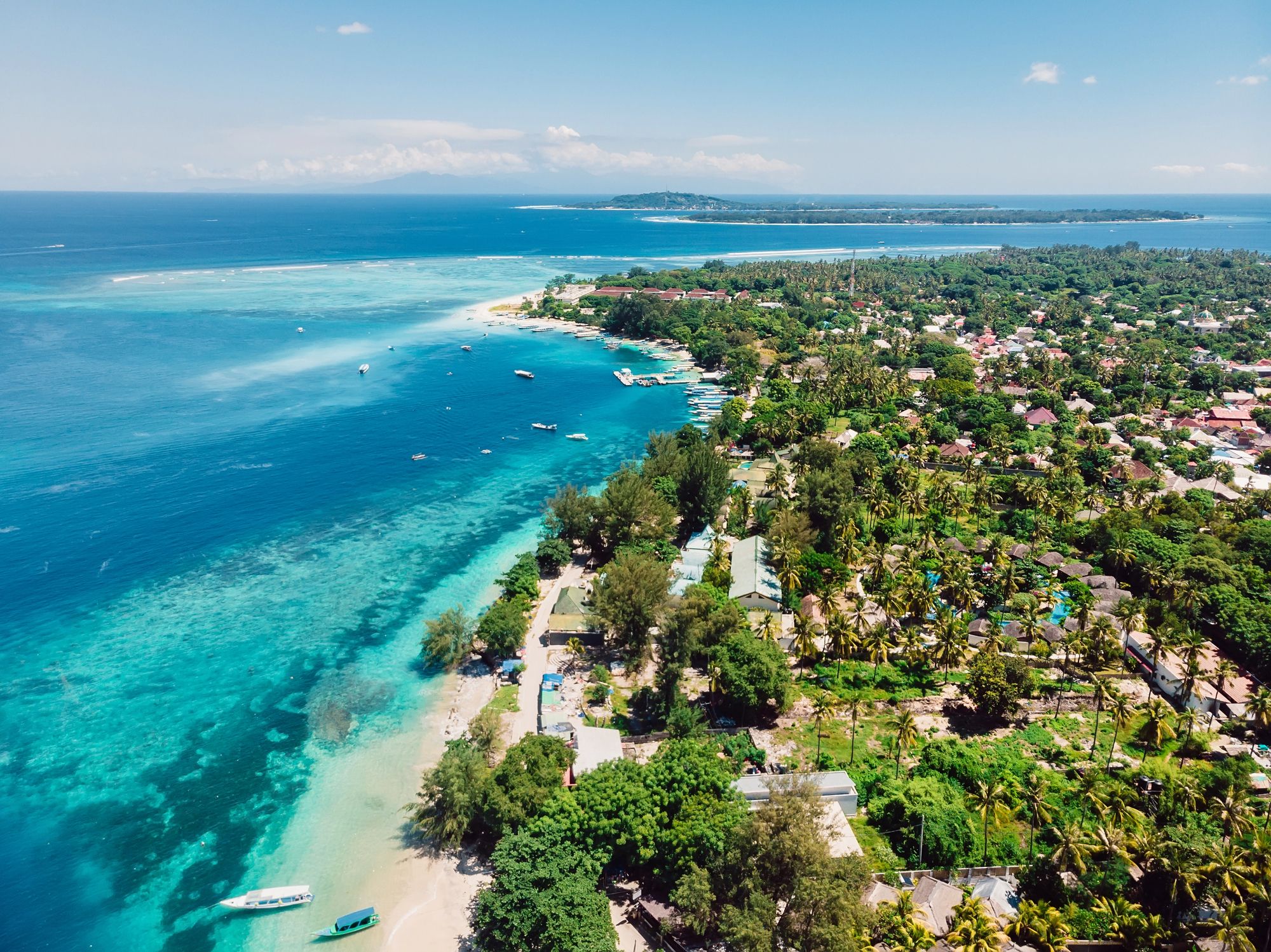Hidden up in the far north of Vanuatu, Torba Province is honestly one of the country’s best-kept secrets. It’s made up of the Banks and Torres island groups, and if you’re after a real escape from the usual tourist haunts, this is it. Torba is Vanuatu’s northernmost province, where you’ll find untouched beaches, active volcanoes, and a culture that’s barely changed over the years.
When you get to Torba, Gaua stands out as the largest island. This place is wild—there’s an active volcano and the country’s biggest lake all in one spot. Because these islands are so remote, their natural beauty and old-school traditions are still alive and well. Hardly anyone makes it up here, so you’ll have the rare chance to experience village life and see some jaw-dropping sights without the crowds.
From overwater bungalows to beachfront resorts, find your perfect stay in this island nation of more than 80 islands. Instant booking with best price guarantee!
Browse Accommodations Now
Getting to Torba isn’t exactly a breeze, but those who go the extra mile end up with the kind of travel stories most people only dream about. You’ll wander through traditional villages, swim in crystal-clear waters, and witness ceremonies that haven’t changed for generations. Sure, the facilities are simple, but the locals’ warmth and the untouched scenery more than make up for any lack of modern luxuries.
Overview of Torba Province
Torba Province sits at the very top of Vanuatu, made up of the Banks and Torres islands. If you’re looking for pristine beaches, lively reefs, and real-deal cultural encounters, you’ll find them here—far from the usual tourist routes.
Geographic Location
Torba stretches across Vanuatu’s northern tip in the South Pacific. It’s basically two main island groups: the Banks and the Torres. This area is so far north, it almost touches the Solomon Islands.
You’ll notice the islands are mostly volcanic, with thick forests and powdery white beaches. Some of these islands even have active volcanoes—a reminder that Vanuatu sits right on the Pacific “Ring of Fire.” The water here is absolutely packed with coral reefs and marine life, making it a top spot for snorkeling and diving.
Because Torba is so isolated, not many people visit. That’s a good thing if you’re after unspoiled nature and a way of life you won’t see elsewhere.
History and Culture
People in Torba Province keep strong ties to their old customs and beliefs. Each island has its own twist on traditions, languages, and ceremonies—most of which have been handed down for ages.
Villages here live by kastom (custom), which shapes everything from social rules to celebrations and daily routines. You’ll often catch traditional dances and music, especially during festivals or when guests are around.
Torba’s history feels different from the southern islands. Because it’s so out of the way, outside influences haven’t really taken hold, and that’s helped protect the local traditions and languages.
Most folks live in small villages, growing their own food and fishing. If you visit, you’ll see traditional cooking, handmade crafts, and the kind of community gatherings that give you a real taste of ni-Vanuatu culture.
How to Get to Torba Province
Making your way to Torba takes a bit of planning—it’s not exactly on the beaten path. The province includes the Banks and Torres Islands, and while transport is limited, it’s reliable if you book ahead.
Flights and Airlines
Air Vanuatu runs flights from Port Vila to Torba, with the main airport on Vanua Lava. Flights usually go 2-3 times a week, but the schedule shifts with the seasons. It’s about a 1.5-hour flight from Port Vila.
If you’re already up north, you can catch a connecting flight from Luganville on Santo Island—it’s only about 45 minutes. These flights use smaller planes, so you’ll want to pack light.
Air Vanuatu Contact Information:
- Booking office: +678 20200
- Website: www.airvanuatu.com
Seats fill up fast, so it’s best to book a few weeks ahead, especially in the busy months (May to October).
Travel Within Vanuatu
You’ll probably arrive in Vanuatu through one of these gateways:
From Port Vila (Efate Island):
- Direct flights to Vanua Lava (Torba Province)
- Or connect through Santo for more options
From Luganville (Santo Island):
- Regular flights to Torba
- It’s closer than flying from Port Vila
Some travelers mix a trip to Torba with other Vanuatu hotspots like Tanna Island, but you’ll have to backtrack through Port Vila.
If you have time and patience, cargo ships sometimes run from Santo to the Banks Islands. It’s a slow ride—1 to 2 days—and pretty basic, but definitely memorable.
Best Time to Visit Torba Province
Torba Province is pleasant all year, but your timing can really shape your experience. The weather splits into dry and wet seasons, and that affects everything from activities to how easy it is to get around.
Elegant resorts, tropical villas, and vacation rentals with immediate confirmation. Experience a culture dating back to 1,300 BC in this breathtaking archipelago!
See Available Properties
Dry Season
From April to October, Torba is in its dry season. Temperatures hang around 22-28°C (72-82°F) with lower humidity. Rain is rare, so it’s perfect for getting outdoors.
This is the time to hike through the forests, drop by remote villages, and hit the water for snorkeling or diving. The skies are usually clear—ideal for photos or stargazing. May and June feel especially comfortable, with breezes that keep things cool.
Boats between islands run more reliably in the dry months, and the seas are calmer. Local festivals often happen now, so you might catch some genuine cultural events.
Rainy Season
From November to March, the rains pick up and it gets warmer—think 25-32°C (77-90°F) and sticky. Showers come in quick, heavy bursts, but it’s not usually a washout all day.
Some activities might get rained out, but the upside? Waterfalls are at their best, and the whole place turns bright green. It’s a different vibe—lush and wild.
You’ll find cheaper accommodation during the rainy season. But be ready for possible flight delays or canceled boat rides. Some areas might be hard to reach if the rain gets heavy.
The Torres group in the northwest usually gets less rain than the Banks islands. If you visit now, pack light, quick-drying clothes and don’t forget bug spray.
Top Attractions in Torba Province
Torba really does have some of the most untouched spots in Vanuatu. If you want to get off the grid, this is the place—think wild beaches, active volcanoes, and traditions that haven’t faded.
Banks Islands Highlights
The Banks Islands make up a big chunk of Torba. Gaua Island is a must-see, with Lake Letas—the country’s largest freshwater lake—ringed by forests and hiking trails. Mount Garet, an active volcano, looms over it all and adds a bit of drama.
On Vanualava Island, you can dive into village life and see ceremonies that haven’t changed in ages. Take a short boat trip to Rah, a tiny island known for its friendly locals and perfect white sand beaches.
Motalava and Loh Islands are great for swimming and snorkeling in clear blue water. Island-hopping here lets you soak up Melanesian culture in all its forms.
Natural Landscapes
Torba’s scenery is something else, from volcanic peaks to coral reefs. Mount Tabwemasana is a tough trek, but the views are worth every step.
Waterfall Bay delivers exactly what you’d expect—cascades pouring straight into the ocean, with swimming spots that feel like a reward after a hike.
On Torres Island, you’ll find hidden waterfalls that most tourists never see. You’ll need a local guide to track them down, but the adventure pays off with pristine swimming holes and some epic photo ops.
The underwater world here is just as stunning. Snorkelers and divers will find coral gardens, colorful fish, and sometimes even dolphins. Around Vanua Lava, the water is so clear you’ll spot turtles and all sorts of marine life.
Outdoor Activities and Experiences
Torba is a playground for outdoor lovers, and because it’s so far-flung, you’ll probably have most places to yourself. Both the land and the sea offer plenty to explore.
Trekking and Hiking
The volcanic terrain here is perfect for trekking. Trails range from easy coastal walks to more demanding routes inland. Many paths take you through villages, where locals are happy to share stories or show you around.
If you’re up for a challenge, book a guide for a longer trek. The payoff? Incredible views of the Pacific and a real sense of accomplishment.
Local guides know the land and its stories, so don’t skip out—they’ll help you find hidden spots and explain what you’re seeing.
Try to start hikes early to beat the heat, and bring water, sunscreen, and sturdy shoes. Trails can get rough in places.
Snorkeling and Diving
Torba’s underwater world is a highlight. The coral reefs are teeming with life—perfect for snorkelers and divers.
Easy booking across stunning accommodations from luxury resorts to eco-friendly retreats. This Y-shaped archipelago offers pristine beaches, active volcanoes, and world-class diving!
Secure Your South Pacific Getaway
Most guesthouses lend out snorkel gear, so you can jump right in off the beach. Water clarity is usually best in the dry season.
Divers will find dramatic drop-offs, caves, and colorful coral gardens. Local operators can set up trips based on your skill level.
Expect to see tropical fish, sea turtles, and sometimes reef sharks. Because Torba hasn’t been overrun by tourism, the reefs are healthy and full of life.
The water’s warm all year, so you probably won’t need a thick wetsuit.
Cuisine and Local Specialties
Eating in Torba is a treat if you like simple, fresh flavors. Isolation has kept Vanuatu’s food traditions alive, so you’ll get to try dishes you won’t find elsewhere.
Traditional Foods
Seafood is the star here—think tuna, caught fresh and served raw (like ceviche) or smoked for a richer flavor.
Don’t miss laplap, the national dish. It’s made from grated root veggies (like taro or yam), wrapped in banana leaves, and baked in an earth oven. Tuluk is another favorite—grated manioc stuffed with meat and cooked in leaves.
Coconut pops up in everything, from curries to desserts. If you visit when it’s in season, try the coconut crab—it’s a local delicacy.
Meals are usually straightforward but packed with flavor, focusing on what’s fresh that day. Most guesthouses and restaurants serve fish caught just hours before it hits your plate.
Where to Stay in Torba Province
You’ll find a range of places to stay in Torba, from basic bungalows to private island resorts. Your pick depends on your budget and what kind of experience you want.
Budget Options:
- Josedith Bungalow (Loh Island)
- Tutumel Bay Bungalows (Loh Island)
Mid-Range Accommodations:
- Kamilisa Memorial Resort (Linua Island)
- Lamap Paradise Beach Lodge
- Waterfront Lodge
- Alofa Beach Bungalows
Luxury Retreats:
- Ratua Private Island Resort
- Oyster Island Resort
- Suxxeed Beach Resort
- Bokissa Private Island Resort
Most places can help you organize a local guide or tours. Since options are limited, it’s smart to book ahead.
If you stay at a local bungalow, you’ll get a real taste of Vanuatu hospitality—often with home-cooked meals using local ingredients.
Resorts offer more creature comforts, but you’ll pay for it. Private island resorts are the most exclusive, with quiet beaches and lots of privacy.
No matter where you stay, you’re surrounded by the wild beauty that makes Torba special. Life moves slower here, and honestly, that’s part of the magic.
Travel Tips and Practical Information
Before you head to Torba Province, you’ll want to get a handle on the local climate and health basics. These details can really shape your trip, especially this far off the beaten path.
Weather and Climate
Torba Province has a tropical climate with clear wet and dry seasons. The dry season stretches from May to October, and honestly, that’s the best time to visit. You’ll find less rain and temperatures hovering around 25-28°C (77-82°F)—pretty comfortable, if you ask me.
From November to April, the rainy season takes over. January and February usually get hit with the most rain, and the humidity? It often climbs above 80%, so be ready for that sticky feeling.
When you’re packing, grab lightweight, breathable clothes. Even in the dry months, a sudden rain shower isn’t out of the question, so tossing in a light rain jacket makes sense.
Island weather can flip in a heartbeat. If you’re planning to hop between islands, check the local forecast first. Most folks prefer to leave in the morning since the water tends to be calmer then.
Safety and Health
Torba Province feels pretty safe overall, but you’ll want to stay alert—its remote vibe means you can’t take everything for granted. Medical help is hard to come by, so it’s smart to pack a solid first aid kit and any prescription meds you might need.
Keep up with handwashing as much as you can. If you end up in a crowd, try to keep about 1.5 meters between you and others.
Mosquitoes can be a nuisance, especially at dawn and dusk. Slap on some repellent and throw on long sleeves if you’ve got them. Sure, mosquito-borne illnesses aren’t exactly rampant here, but Vanuatu as a whole does see cases.
On the smaller islands, finding clean drinking water isn’t always easy. You’ll want to bring a water purifier or just stick to bottled water.
If something goes wrong, you’ll need a plan. Cell service tends to drop out in more remote spots, so make sure someone knows where you’re headed and when you’ll be back.
Find available hotels and vacation homes instantly. No fees, best rates guaranteed!
Check Availability Now

